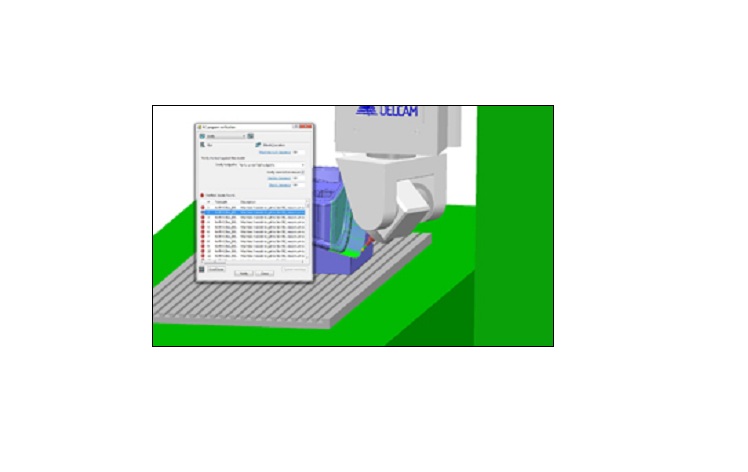Delcam has released the 2015 R2 version of its PowerMILL programming software for five-axis and high-speed machining. The new release includes improvements in toolpath simulation and verification, area clearance and drilling, plus more options for customisation by users.
In the 2015 R2 release, complete verification can be undertaken of a project for machine-tool issues such as collisions, rather than having to undertake verification of each individual toolpath in turn. Comprehensive verification is performed, including ensuring that the machine tool is capable of running the proposed strategy, as well as checking for both machine-tool collisions and tooling collisions. A detailed list is generated of any problems found so that these can be fixed on a case-by-case basis.
In related improvement, automatic collision checking of area-clearance toolpaths now takes into account any remaining stock on a model, both when checking the cutter and the tool-holder. In addition, all tool-holder collision checking for area clearance takes place during toolpath calculation, allowing the user to ensure that these toolpaths can be completely free of tool-holder collisions.
Simulation has also been improved with the addition of the ability to simulate machine-tool movements as tool changes are executed. Again, a list of any problems found is produced so they can be corrected.
Two enhancements have been made to the drilling options in PowerMILL. Firstly, drilling calculations can now reference a stock model instead of the block, with toolpaths created from the point when the tool touches the stock. This reduces the time spent air cutting. Secondly, drills larger that the milling tool can be used when using drilling to create an entry point for area clearance. Alternatively, a larger entry hole can be created by helical ramping of the tool.
The options for user customisation have been increased steadily over the last few releases of PowerMILL. These now include the ability to create keyboard shortcuts for menu items, toolbar items, custom commands or macros, allowing frequently-used commands to be accessed more quickly. Another new option allows expression fields to be added to custom toolbars.


